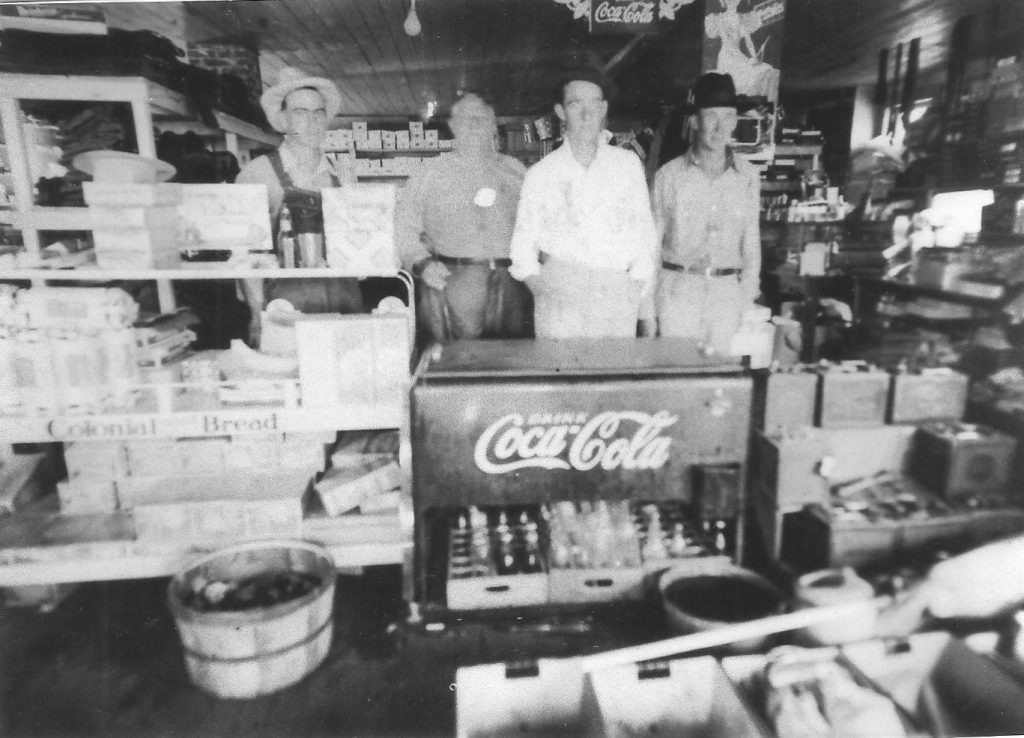By Dr. Curtis Varnell
Every few miles on my journey to Camden, AR., I encountered an old, dilapidated building with ancient advertisements painted on the windows, rusting gas pumps, and collapsing roofs. Remnants of the thriving mom and pop stores that were common throughout the prior century, they now remind us of days gone by.

In the early 1900’s, travel was difficult and slow. Every few miles, ambitious entrepreneurs would erect small building which provided those essentials that were not available to the local population. Huge kegs held everything from dried beans to square nails. Like the huge warehouse stores of today, they provided hardware, farm equipment, animal feed and other products that the locals couldn’t build or grow for themselves. My great grandfather operated one such store in St. Louis Valley. Located on a rural dirt road and known as the Varnell Cash house, the store provided a service not available for several miles.

Located on highway 22, the Mosley store supplied goods to everyone in the community in which I was raised. The store contained a menagerie of products. A huge DX sign alerted passing motorists that gasoline was available. The proprietor would rush out to pump gas from one of the two available pumps, both of which just provided leaded gasoline. They checked the water and oil. If oil was needed, Mr. Mosley would disappear into a small side building and withdraw a quart from a fifty-gallon drum. The same room contained spare tires, tubes, patches, and other basics to keep you on the road. A small insulated building on the opposite side contained blocks of ice which were chipped and dispensed in sections weighing 25 pounds.

Inside the store, men gathered around the pop bellied coal stove and discussed politics, hunting, fishing, and local gossip. The main counter contained the cash register, boxes of candy, with a rack containing dozens of kinds of cigars and cigarettes attached to the wall behind the counter. The enclosed refrigerated case contained milk, dairy products, and loafs of sandwich meats which were sold to customers by the pound. Hungry customers could purchase a thick sandwich made on the site, a bag of chips, and a soft-drink for a dollar or so.
Unlike today, essentials such as flour, sugar, and lard were sold in large quantities because they were used several times a day to prepare family meals. The typical flour sack contained 25 pounds, the sugar a little smaller, and the lard came in tins containing five pounds.

Another frozen case contained ice cream, sold by the dip to customers. By the time I came along, the price was a nickel a dip or three dips for a dime. Soda in glass bottles was dispensed from a chest and were ice cold. To increase sales, some bottles contained 16 oz. instead of the typical 12 oz. and were popular for kids who might be able to purchase one per week.
Tin goods were scattered on shelves throughout the store. One popular item at our house was Pet milk in a can. The milk was used as cream in coffee, in making gravy, and sometimes to supplement milk for the baby bottle. Span, ever popular since the war, was purchased as a main course.
Seed for planting, fertilizer, and animal feed was sold in the back of the store. Both the feed and flour sacks were often made of gingham cloth that could be used for making clothes or quilts.
By the mid-century, travel had made it possible to travel to local towns but the small stores were still popular. One of the primary reasons was available credit. Before credit cards, the local store owner would extend credit for a period of time. People without cash simply stated, “Put that on my bill.” The owner had a sales pad with the family name and would write down the item, the cost, and present the customer with a duplicate. Like credit cards, it was easy to spend more money than expected and the person could end up “owing my soul to the company store.” More often it was the proprietor who suffered most from unredeemable credit.
Most of the general mom and pop stores are a thing of the past. Once a center of the community, they now stand abandoned and relics of a time gone by.







